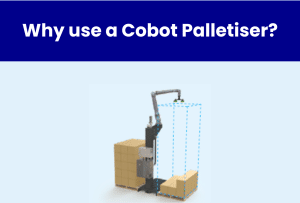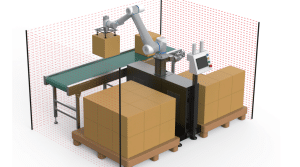Productivity for profitability and growth
In order to remain competitive and profitable, as well as to support growth, increasing productivity should be a top priority for leaders and managers in all factory environments. However, it doesn’t always take implementing new, shiny and expensive technologies to boost productivity. Many manufacturers start without a clear strategy and end up creating inefficiencies and wasting resources. A complete strategy is crucial, and, in this article, we’ll cover the top three mistakes that manufacturers make when trying to boost productivity as well as provide tips on how to avoid them.
Mistake 1: Neglecting Workflow And Process Design
Manufacturers have productivity constraints when they have inefficient workflows and processes. Neglecting workflow and process design can lead to wasted time, resources, and unnecessary complexity in production processes. Lean and Six Sigma methodologies are based in thinking about the process to reduce waste and reduce defects. When the process is improved in these ways, increased productivity is the result.
Check out the steps Omnatec takes when starting with a new partner.
Tip: Manufacturers should review their workflows and processes to identify any inefficiencies that may be reducing productivity. Basic 5S projects or a Value Stream Map will give managers confidence they have no major inefficiencies in the process. By optimizing workflows and processes, manufacturers can minimize the time and resources needed to produce goods and achieve sustainable productivity increases.
Mistake 2: Automation For Automation’s Sake
One of the biggest mistakes that manufacturers make when trying to increase productivity is to focus solely on adding new equipment or expanding their facilities without first understanding the root causes of their productivity constraints. While adding more equipment can increase productivity in the short term, it may not be a sustainable solution if the underlying constraints are not identified and addressed. It can also lead to wasted resources on unnecessary or ineffective automation.
Automation can be beneficial for tasks that are repetitive, dangerous, or require a high level of precision. However, not all tasks are suitable for automation, and automating a process that doesn’t require it can lead to inefficiencies and decreased productivity. Ensuring that the automation of any task is keeping the “drumbeat” of the overall process (including sales) in mind is crucial.
Check out Part 1 and Part 2 of our TOC methodology articles to see how automation can fit into an overall productivity improvement plan.
Tip: Manufacturers should analyze their operations and processes from the top down. A Gemba walk or a Value Stream Map can help identify the specific bottlenecks in their production process that are causing productivity constraints. By addressing the root causes of constraints, manufacturers can achieve sustainable productivity increases and avoid wasting resources on ineffective solutions. They can also ensure they level up their process evenly, bringing the productivity of the whole factory up.
Mistake 3 Ignoring Maintenance And Downtime
Manufacturers may face productivity constraints if they neglect equipment maintenance and fail to minimize downtime. Poor equipment maintenance can lead to unexpected downtime and lost productivity, resulting in lower production output and decreased profitability. In factories where there is low waste and well-balanced process flow, high uptime of equipment is important in keeping overall productivity high.
Check out Part 2 of our Lean articles to understand why this matters.
Tip: Manufacturers should ensure that their equipment is well-maintained, and downtime is minimized to maximize productivity. By implementing a preventative maintenance program, manufacturers can keep their equipment in good working condition, reduce downtime, and achieve sustainable productivity increases.
Takeaways For Your Factory
Boosting productivity is essential to remain competitive in today’s modern manufacturing environment. By avoiding these three mistakes and implementing the tips provided, manufacturers can identify the root causes of productivity constraints, optimize workflows and processes, and minimize equipment downtime, achieving sustainable productivity increases and remaining profitable in their industry.
Let us know if you need some help boosting your productivity!





